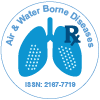The Battle against Pollution: A Comprehensive Analysis of Air and Water Pollution
Received Date: Apr 01, 2024 / Accepted Date: Apr 29, 2024 / Published Date: Apr 29, 2024
Abstract
Air and water pollution represent significant environmental challenges with profound impacts on human health, ecosystems, and global climate patterns. This abstract examines the sources, consequences, and mitigation strategies associated with air and water pollution. Air pollution stems from various anthropogenic activities such as industrial emissions, vehicular exhaust, agricultural practices, and residential energy consumption. These pollutants include particulate matter, nitrogen oxides, sulfur dioxide, volatile organic compounds, and heavy metals, which can cause respiratory ailments, cardiovascular diseases, and contribute to climate change through the greenhouse effect and formation of smog. Water pollution arises from industrial discharges, agricultural runoff, improper waste disposal, and urbanization, contaminating freshwater sources and marine ecosystems. Common pollutants include pathogens, nutrients, heavy metals, pesticides, and plastics, posing risks to aquatic life, human health, and the sustainability of water resources.
Mitigation strategies for air pollution encompass regulatory measures, technological advancements, and behavioral changes. These include the implementation of emission standards, adoption of cleaner energy sources, promotion of public transportation, and urban planning to reduce vehicle congestion and promote green spaces. Additionally, international cooperation and policies such as the Paris Agreement aim to address global challenges posed by air pollution and climate change. Similarly, combating water pollution requires a multi-faceted approach involving pollution prevention, treatment technologies, and policy interventions. Efforts focus on wastewater treatment, stormwater management, watershed protection, and sustainable agricultural practices to minimize pollutant loading into water bodies. Furthermore, public awareness campaigns, community engagement, and enforcement of regulations are essential for fostering responsible stewardship of water resources.
Addressing air and water pollution necessitates concerted efforts from governments, industries, communities, and individuals. By implementing comprehensive strategies to reduce emissions, mitigate contamination, and promote environmental stewardship, society can safeguard public health, preserve ecosystems, and ensure sustainable development for future generations.
Citation: Srinivasa R (2024) The Battle against Pollution: A Comprehensive Analysis of Air and Water Pollution. Air Water Borne Dis 13: 228.
Copyright: © 2024 Srinivasa R. This is an open-access article distributed under the terms of the Creative Commons Attribution License, which permits unrestricted use, distribution, and reproduction in any medium, provided the original author and source are credited.
